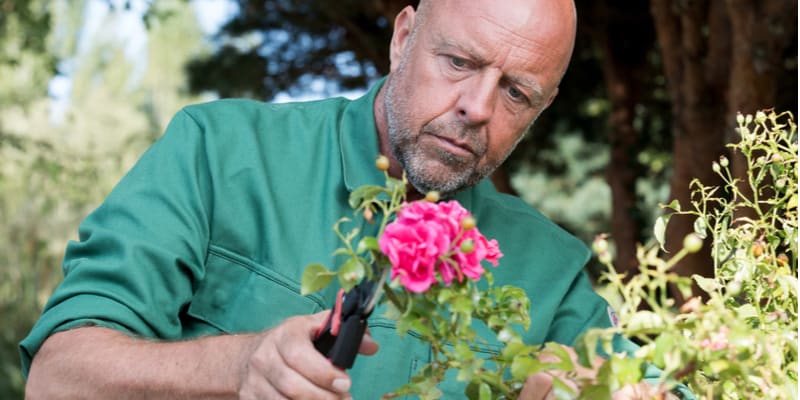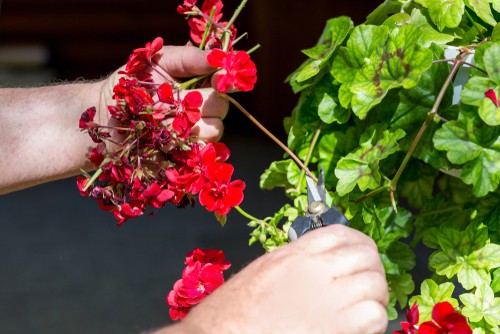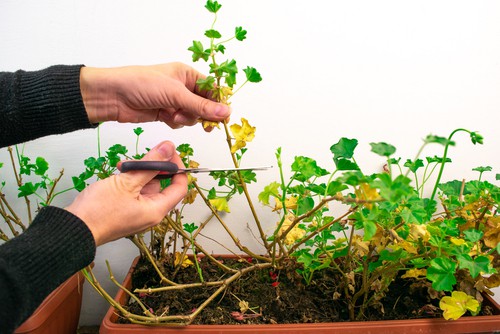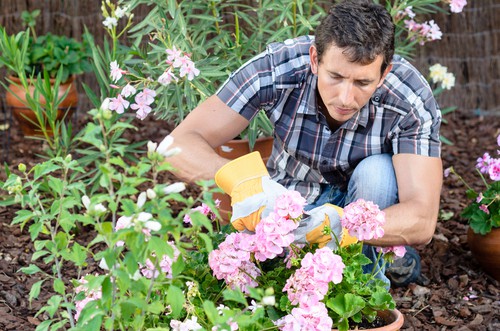
How to Prune and Deadhead Geraniums
Our site is reader supported, this means we may earn a small commission from Amazon and other affiliates when you buy through links on our site.
Did you know that Geranium leaves of some types can be used in the kitchen? These bright bloomed and aromatic foliage plants have several uses apart from being ornamental. Both the flowers and the leaves are edible and they are used in the production of geranium oil, which is said to have medical benefits like reducing inflammation.
You can reap the benefits of geraniums by planting them in your garden or pots but they also make an excellent house plant. Pruning them occasionally ensures the plants perform optimally both in the production of blooms and overall appearance.
In this guide, I talk about how to prune and dead geraniums to grow healthy and more productive plants. Without wasting more time, let us dive in:
Why I deadhead geraniums
Deadheading is ideal for blooming plants such as geraniums as it leads to continual blooms. As geraniums mature, you find that the blooms become sparse because the plant’s go to seed and the resources are limited. Deadheading allows the plant to focus its resources on the foliage and produce more blooms.
Another good reason for deadheading is to prevent the plant from producing seeds. Unless you want to keep harvesting geranium seeds, deadheading is essential. If the plant keeps producing seeds, after a while, it will completely stop producing flowers.
How to deadhead geraniums
For effective deadheading of geraniums, the process has to be gradual rather than all at once because you will be removing flowers as they start to fade. Once you see fading flowers, instead of pulling only the top bit, you need to go further down to a joint or node and cut where the new growth emerges. You can also just pinch them out with your fingers.
Work in sections so as not to miss any flowers while taking note of any diseased or damaged stems that require pruning. Deadheading does not take a lot of time and it doesn’t require complex tools. You can deadhead by using just your hands or a sharp pair of secateurs or sissors.
Pruning geraniums
There are a few reasons why it is important to prune geraniums. One is to maintain a good shape and the other is to promote newer, thicker growth as well as cutting them back to overwinter them. Those growing geraniums in pots should prune them frequently to encourage more growth until they start to produce flowering shoots.
You don’t want the plants outgrowing the pots or compromising proper ventilation will also help prevent fungus and diseases.
Pruning is an essential process in eradicating dead or diseased sections of the plant too. By pruning, you minimise re-infections and give the plant time to recover.
Pruning after flowering
Another occasion that pruning is recommended is after the flowering season around late fall or autumn if you’re in the UK). This is especially true for geraniums that are placed indoors for winter. Overwintering leaves the plant in a dormant state as it prepares for the next flowering season thus no energy is wasted.
How to prune geraniums
After they have finished flowering and starting to look leggy and perhaps a little worn, it’s time to cut back usually about 6-9cm from the ground. The aim is not to completely remove the new growth; therefore, cut back the plant to where the new growth joints are. Use sharp secateurs or scissors to avoid creating uneven surfaces that hide pathogens.
While pruning, remove any residual flowers or leaves to save resources for the plant to heal. In the next season, the plant will present plenty of blooms and a bushier appearance.
Taking care of Geraniums after deadheading and pruning
Geraniums are not weak plants; they can take some pruning and deadheading and spring back better than ever.
Below are some care tips to avoid any future issues.
- In addition to watering the plant to avoid dehydration, it is also key to feed the plant for nutritional purposes. Making use of organic compost or liquid fertilizer will help the plant have enough resources to heal faster.
- Geraniums need sunlight to thrive but not too much sunlight as overexposure to the sun may cause wilting. Around six hours of sunlight in the morning hours is enough to keep the plant healthy.
- Do not overwater geraniums in winter; just give them enough water to keep alive, generally they can handle dry conditions but just give them a litle water occassionaly. Additionally, let the soil slightly dry in between watering to avoid diseases.
- Avoid pulling out late blooms that appear as the flowering season ends, as this will not contribute to better yields in the coming season. This is because as the flowering season draws to an end, the plant has already begun the dormancy stage.
FAQs
For how long do geraniums bloom?
Much to everyone’s pleasure, geraniums possess a long flowering season. The blooms start appearing in spring and continue all the way to the fall. You can even grow them overwinter as a house plant.
What is the difference between deadheading common geraniums and pelargoniums?
Pelargoniums can continue to de deadheaded through the winter because they do not go dormant like geraniums. As long as they are indoors away from the freezing cold, they will continue blooming, unlike geraniums that need overwintering.
Which pests affect geraniums?
Geraniums get a fair share of pests attacks including fall cankerworms, slugs, aphids, and cabbage loppers. Once you notice discoloured sections, damaged leaves, and traces of damaged stems, it’s best to tackle the problem straight away. Use pesticides or fungicides or organic methods such as soap and water spray or slug traps. Fast action will prevent damage to the whole plant.
Read next: Pruning choisya to promote better growth
Read next: How to prune lavatera


